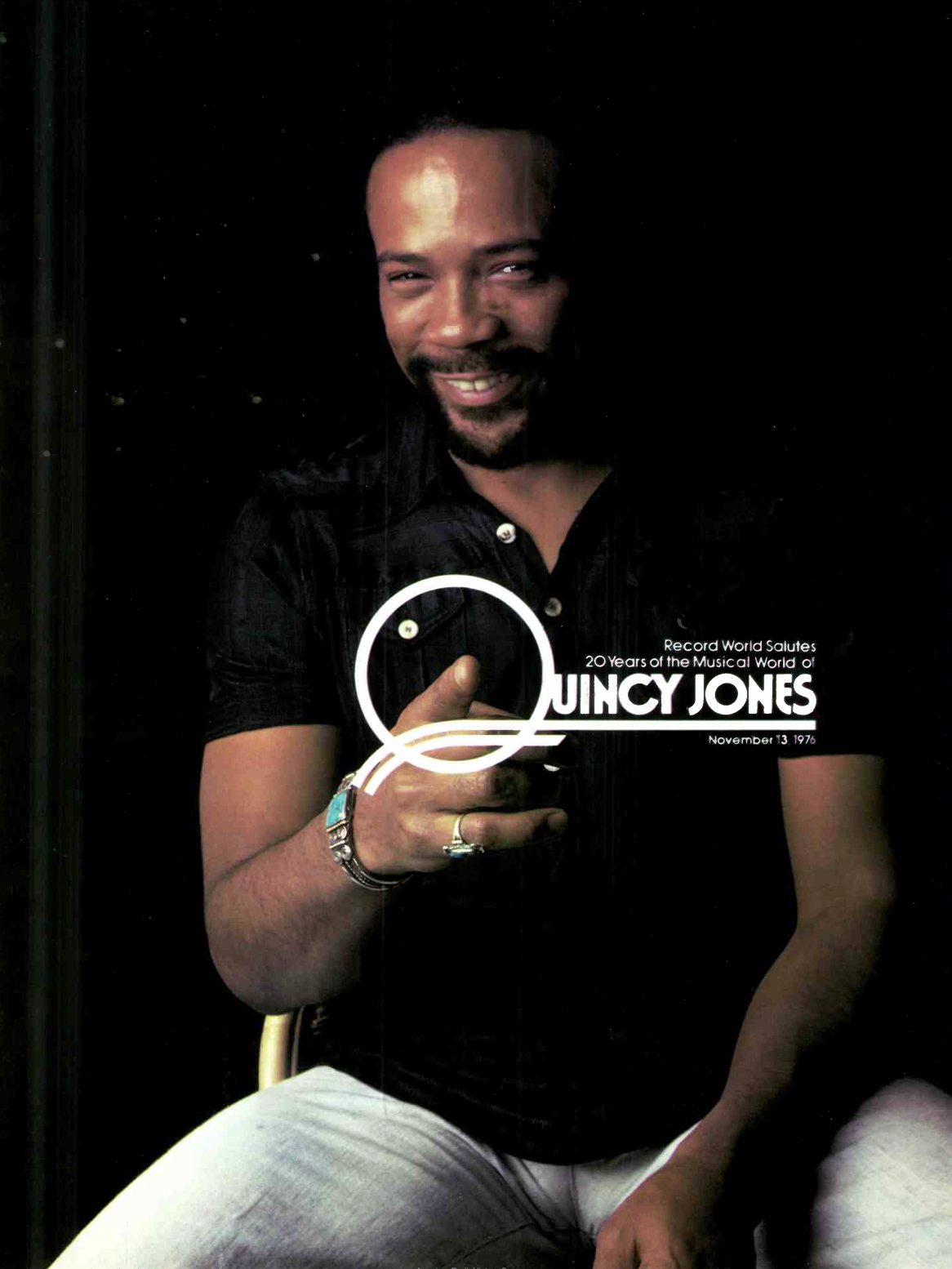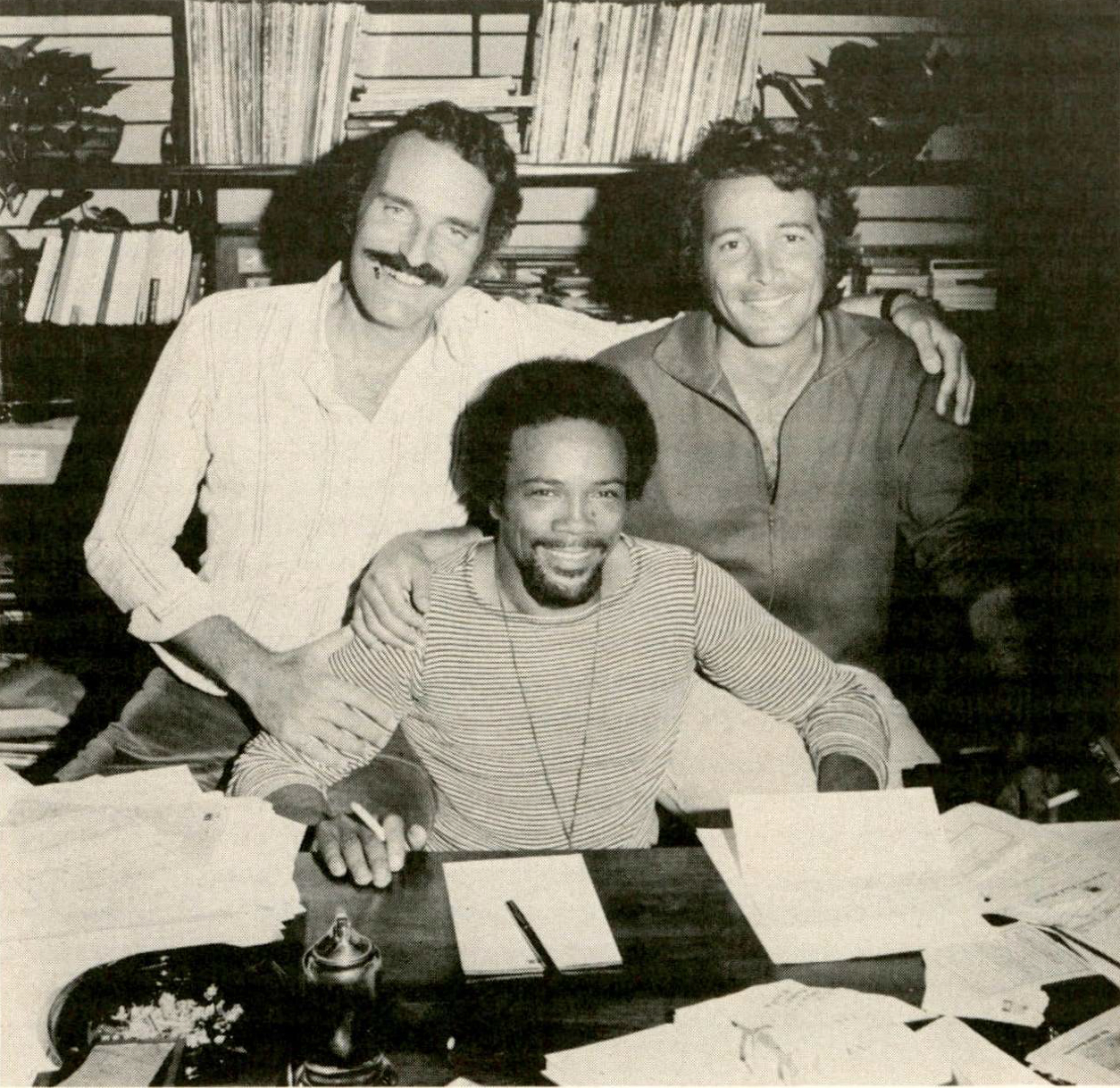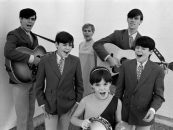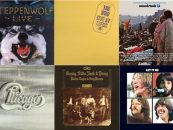 Long before his association with Michael Jackson began in 1979, Quincy Jones was one of the music world’s most accomplished composers, arrangers, producers and band leaders, having worked with such legendary artists as Frank Sinatra, Count Basie, Dizzy Gillespie and Ray Charles, to name a few.
Long before his association with Michael Jackson began in 1979, Quincy Jones was one of the music world’s most accomplished composers, arrangers, producers and band leaders, having worked with such legendary artists as Frank Sinatra, Count Basie, Dizzy Gillespie and Ray Charles, to name a few.
Jones, born March 14, 1933, on the South Side of Chicago, was the subject of a special section in the music industry trade magazine Record World in November 1976, to celebrate his 20th anniversary in the business. At that point, Jones estimated that he had participated in producing, arranging and/or playing on—get this—more than 1,000 albums. He died on November 3, 2024, at age 91.

He was associated with jazz early in his professional career but it wasn’t the genre in which he began. “I started in a gospel quartet, at 11 or 12 years old,” he told Record World‘s Roberta Skopp. “And then I got into playing with high school bands and stuff—marching and everything—concert bands, and dance bands.
“The first band that I got together with that was really our own group was—well, we played jazz and R&B. California blues bands came around all the time so that’s all we ever saw. It was really a mixing, because we used to do comedy; all kinds of stuff. We had to pull our ages up because we worked in a club and we were about 14.
“I met Ray Charles in Seattle—he was 16 then. He had just come in from Florida and between his band and our band we had about every gig in town. We used to work together a lot with big bands, and had jam sessions. It was bebop. We used to play other things but our heart was in that. At that time I heard Louis Armstrong and [Billy] Eckstine] and Dizzy [Gillespie’s] band come through and they were playing a lot of complicated things, which was much more challenging in itself.”
Jones’ recording career began in the early ’50s while he was still a student on a scholarship at the renowned Berklee College of Music in Boston, where he gained a reputation among the school’s instructors as a hard-working, extremely proficient composer and arranger. [He was bestowed an Honorary Doctorate of Music from the school in 1983.] He took a leave of absence to tour Europe with Lionel Hampton’s Premier Band, with whom he had already collaborated. [Years earlier, Hampton had wanted the 15-year-old Jones to join his band. “I was going to run away from home, but his wife put me off the bus and said I was too young.”]
Upon his return to the States, Jones’ studio career blossomed as he began writing and producing for Dinah Washington. During that period, he produced such female stars as Ella Fitzgerald, Sarah Vaughan and LaVern Baker.
Jones had a fruitful association with Gillespie that continued to fill his calendar. In 1956, the jazz trumpeter and bandleader asked him to put a band together for him for the State Department to travel in the Middle East. When they returned, they played the White House Correspondents Dinner and then toured South America. During a night off, Gillespie sat in with a rhythm section and just played straight bebop over a Brazilian rhythm section. “And in the front row were Antonio Carlos Jobim and Astrud Gilberto—they were teenagers and I swear to this day that’s where the bossa nova came from.
“And [when] we came back, I left Dizzy’s band and immediately got a gig to go to Paris to work for a record company. We went for three months and stayed for years. I did about 250 dates and learned how to write the strings.”
By the early ’60s, Jones was serving as a vice president at Mercury Records, “doing 250,000 miles a year traveling.” In 1963, he produced a pair of hits, “It’s My Party” and “You Don’t Own Me,” for the teenaged Lesley Gore.
At the same time, Jones was working with some of the world’s finest male vocalists, including his childhood partner, Ray Charles. He was 33 when he arranged and conducted 1966’s legendary album Sinatra Aa the Sands with Count Basie and the Orchestra.
Jones also collaborated with such jazz giants as Duke Ellington, Milt Jackson, Oscar Peterson and Lester Young, along with Henry Mancini, and others. By his own 30th birthday in 1963, Jones had already recorded a dozen albums under his own name. His 1962 single, “Soul Bossa Nova,” had a second life when it was featured in the title theme for the 1997 film, Austin Powers: International Man of Mystery.
By the mid-’60s, Jones became a much- sought-after composer for Hollywood, scoring, conducting and/or producing numerous movie soundtracks, including 1967’s In the Heat of the Night, In Cold Blood, The Italian Job and Cactus Flower.
In 1969, he began an artistic marriage with Herb Alpert and Jerry Moss’ A&M Records, with annual releases that proved to be significant in terms of both creativity and commerce. His Smackwater Jack in 1972 became his third consecutive release to win the Grammy for Best Instrumental Pop, Rock, or Folk Performance.

Quincy Jones with A&M Records’ Jerry Moss and Herb Alpert
1974 was a turning point, with his biggest album to date, Body Heat. This milestone was a change of sorts for Quincy: gone was the big-band brassy sound that had come to be identified with the sound of “Q.” In its place was a new emphasis on the rhythm section and vocal sound. The move proved to be a fruitful one, for it earned him his first gold record and served as the introduction of Jones’ discoveries the Brothers Johnson. Each of the funk and R&B band’s first four albums—all produced by Jones—went platinum, thanks to such chart-toppers as “I’ll Be Good To You” and “Stomp!”
They joined him on his tour in the summer of 1976, “The Musical World of Quincy Jones,” along with a 20-piece youth orchestra. All the while, he was busy with the 12-hour music score for the ambitious mini-series based on the novel by Alex Haley, Roots, which aired in January 1977, and for which he won the Emmy award for Outstanding Music Composition for a Series.

At the time of this 1976 special feature, Quincy Jones had been married for two years to actress Peggy Lipton
Jones earned 28 Grammy awards—third all-time, as of 2024—and was a recipient of the Recording Academy’s Grammy Legend Award. His numerous other honors included induction into the Rock and Roll Hall of Fame in 2013, the Kennedy Center Honors in 2001, the National Medal of Arts in 2011. His numerous albums under his own name include the platinum successes Sounds… and Stuff Like That!!!,The Dude, Back on the Block and Q’s Jook Joint. His recordings are available in the U.S. here and in the U.K. here.
Related: Our Album Rewind of Back on the Block
- When the Climax Blues Band Got it Right - 05/21/2025
- Ever Wonder How Many Top 10 Singles Motown Had? - 05/13/2025
- Top 10 Bubblegum Hits - 12/30/2024






1 Comment so far
Jump into a conversationI have such great admiration for Quincy Jones. What hasn’t he done? When there were some events honoring him in Seattle, WA in November of 2001, I knew I had to be there. He was signing copies of his newly released autobiography at the EMP as well as having a question and answer session for those who bought tickets.
We waited for some time in line and when it was finally our turn to meet a musical genius it was over far too soon. What just happened? I didn’t get a photo. Stop, let’s start again and luckily we did. I told Quincy Jones something special and he looked up, pointed at me and click, my husband got the picture.
A little later in the day after waiting for a while in line, we got 1st row seats to a very intimate question and answer session. I took a lot of photos in between questions from the audience at the end of the interview by New York Times film critic, Elvis Mitchell.
I have seen and met many musicians over the years but this was one standout day for me. I will never forget it.
Happy Birthday Quincy Jones.